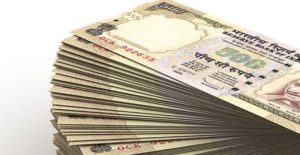Withdrawl of 500 rupee and 1000 rupee note explained
 Prime Minister Narendra Modi’s government on Tuesday, November 8, 2016 in a surprise move withdrew the Rs. 500 and Rs. 1,000 notes in a bid to curb black money. This is necessitated to tackle counterfeiting Indian bank notes, to effectively nullify black money hoarded in cash and curb funding of terrorism with fake notes, the Reserve Bank of India said in a statement.
Prime Minister Narendra Modi’s government on Tuesday, November 8, 2016 in a surprise move withdrew the Rs. 500 and Rs. 1,000 notes in a bid to curb black money. This is necessitated to tackle counterfeiting Indian bank notes, to effectively nullify black money hoarded in cash and curb funding of terrorism with fake notes, the Reserve Bank of India said in a statement.
Here are 10 things to know:
1) The government has withdrawn all Rs. 500 and Rs. 1,000 denominations of bank notes of the Mahatma Gandhi series issued by the RBI till November 8, 2016.
2) From November 10, the public can deposit the Rs. 500, Rs. 1,000 notes at bank branches and the amount will be credited to their bank accounts.
3) There is no limit on deposit of the Rs. 500 and Rs. 1,000 notes in bank accounts.
4) The Rs. 500 and Rs. 1,000 notes can be exchanged for cash at bank branches with a limit of Rs. 4,000 per person.
5) To avail the exchange facility, the public has to present a valid proof of identity.
6) The amount credited at the bank accounts through deposit of Rs. 500, Rs. 1,000 notes can be used by issue of cheques or by remitting through various electronic modes of transfer like NEFT, RTGS, IMPS, mobile banking, internet banking etc.
7) Cash withdrawals from bank accounts over the bank counters will be restricted to Rs. 10,000 per week initially.
8) All ATMs will remain shut on November 9 for restocking.
9) Cash withdrawals from ATMs will be restricted to Rs. 2,000 per day.
10) Banks will remain closed on November 9 to withdraw these notes from counters and ATMs.
Short URL: https://indiandownunder.com.au/?p=7877
